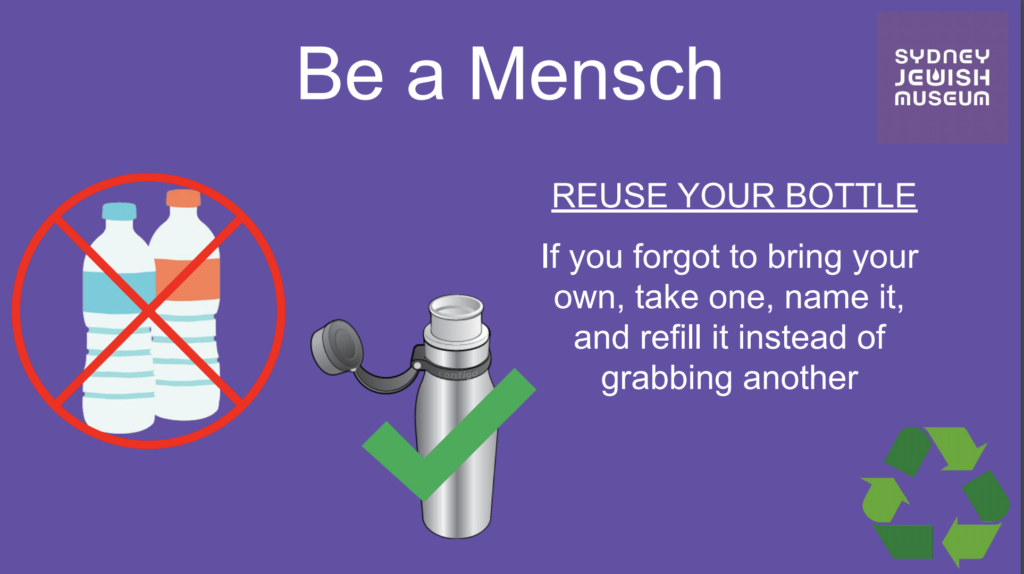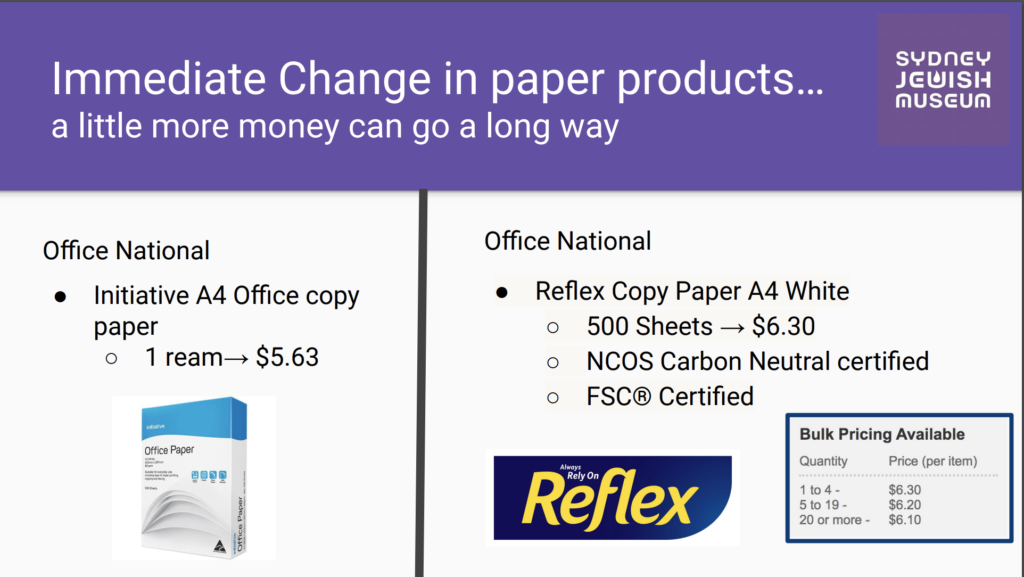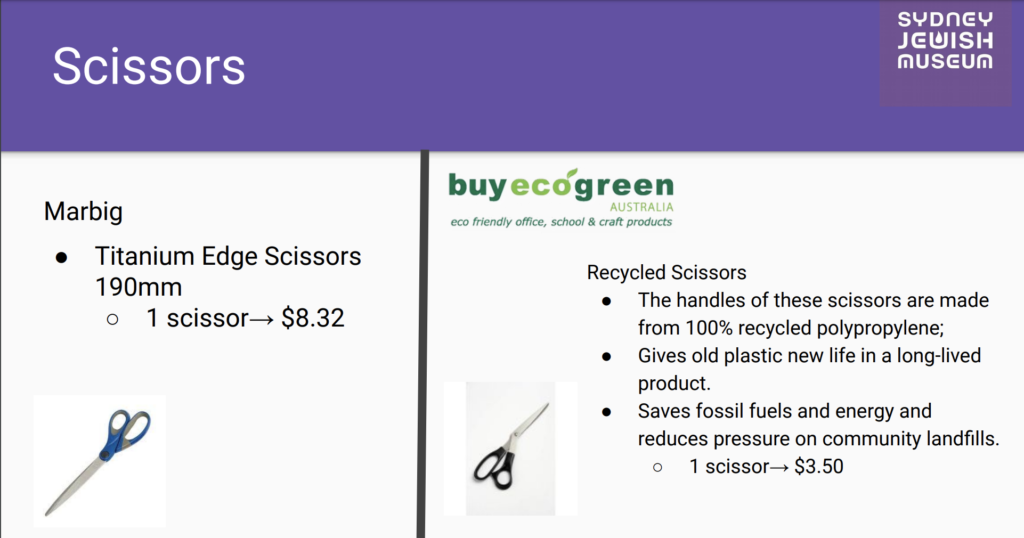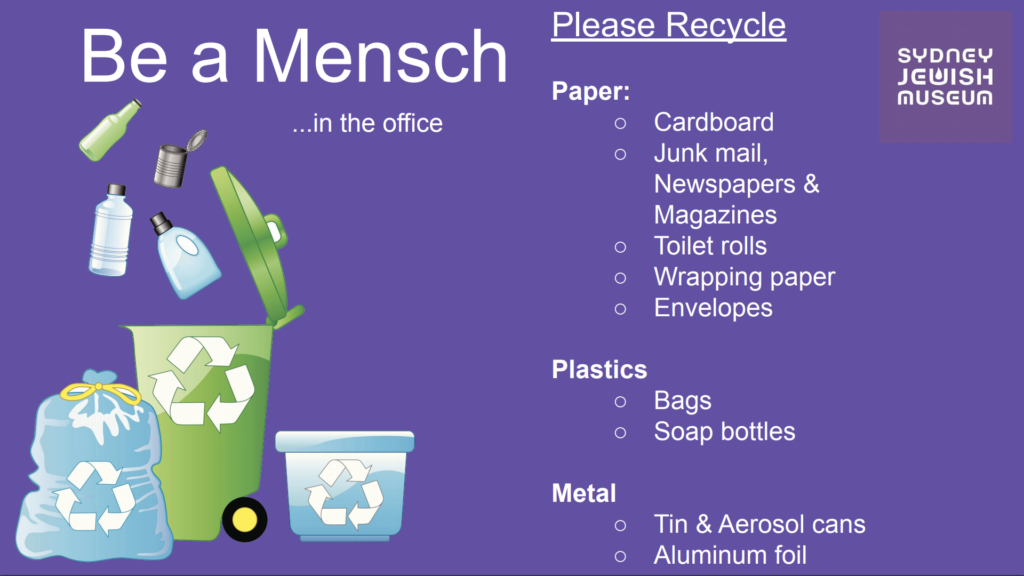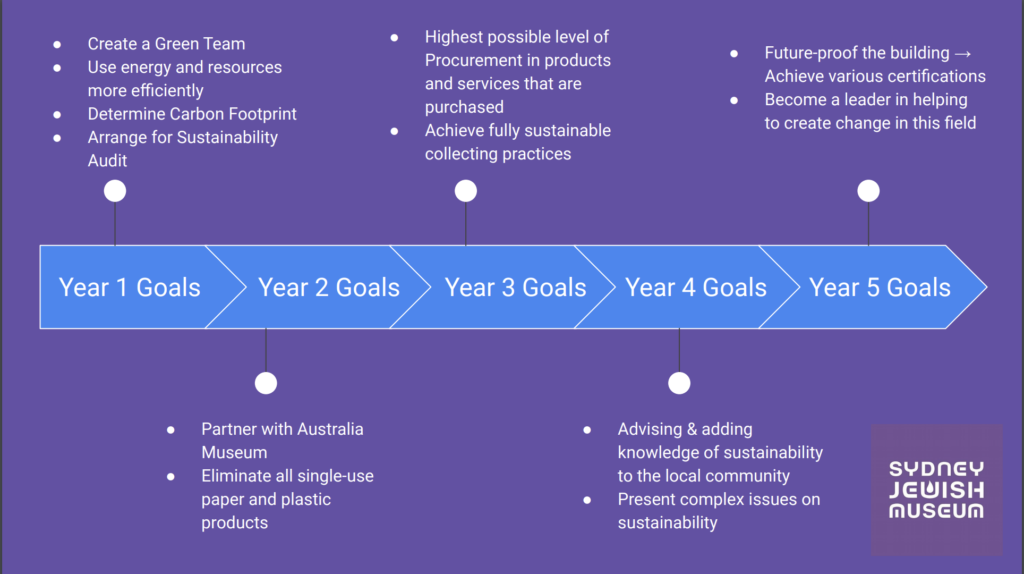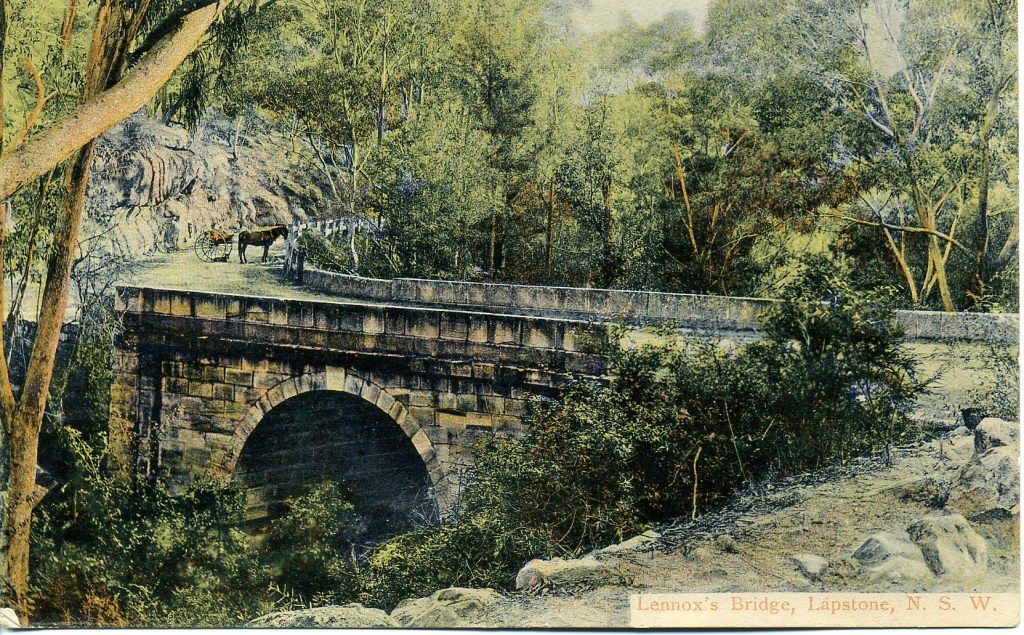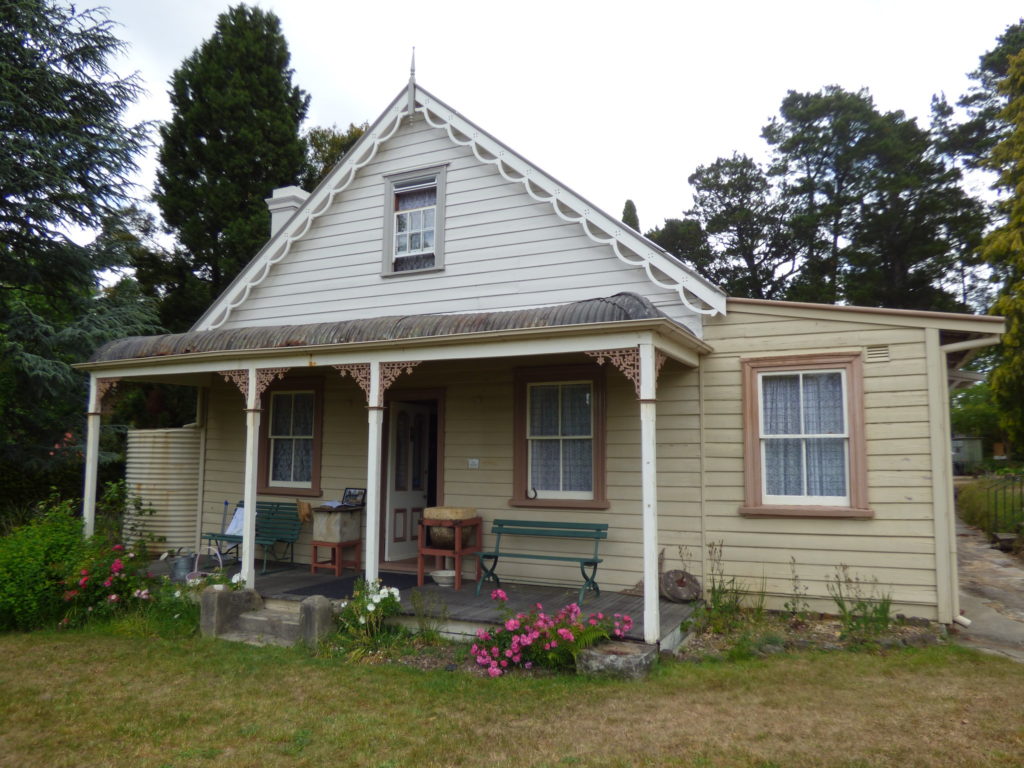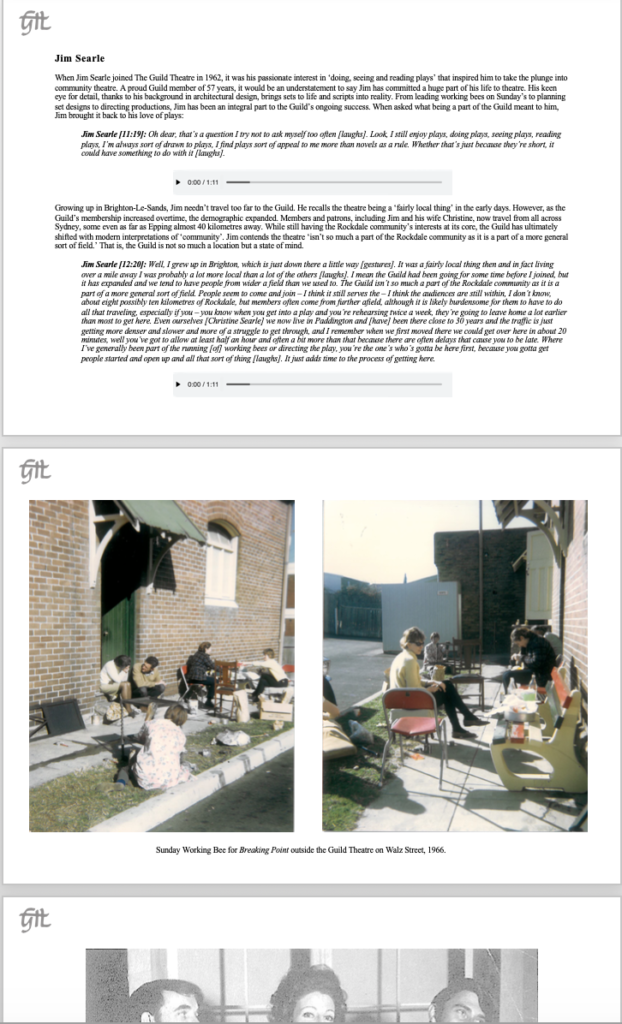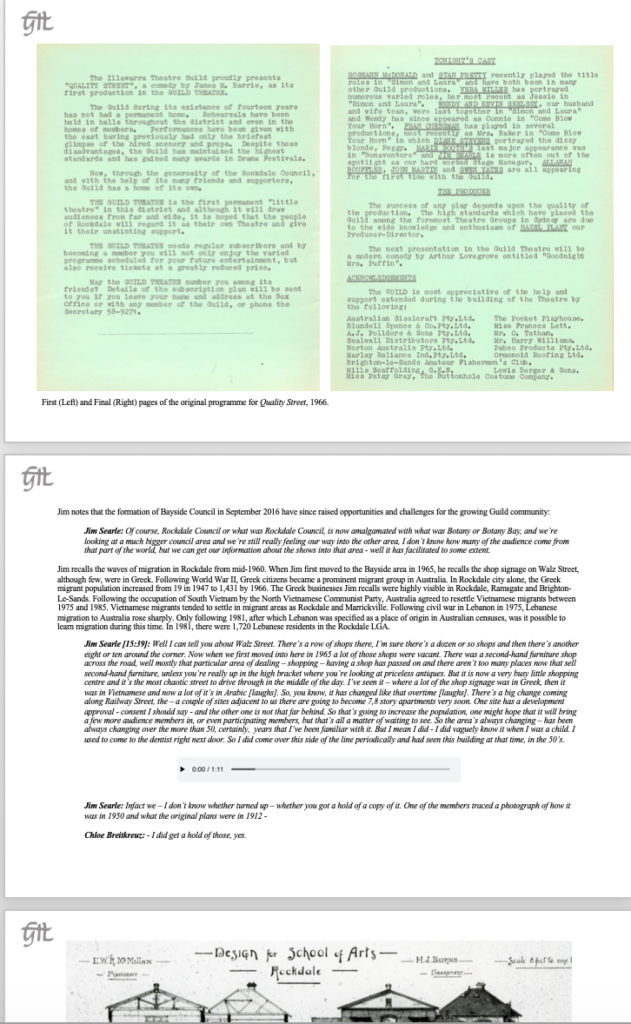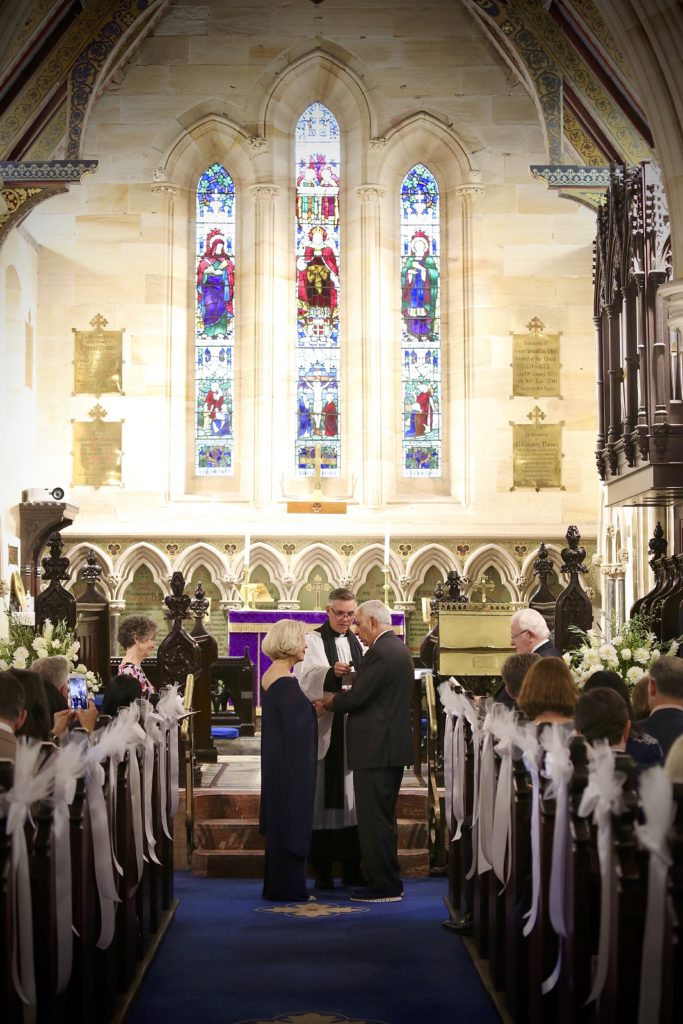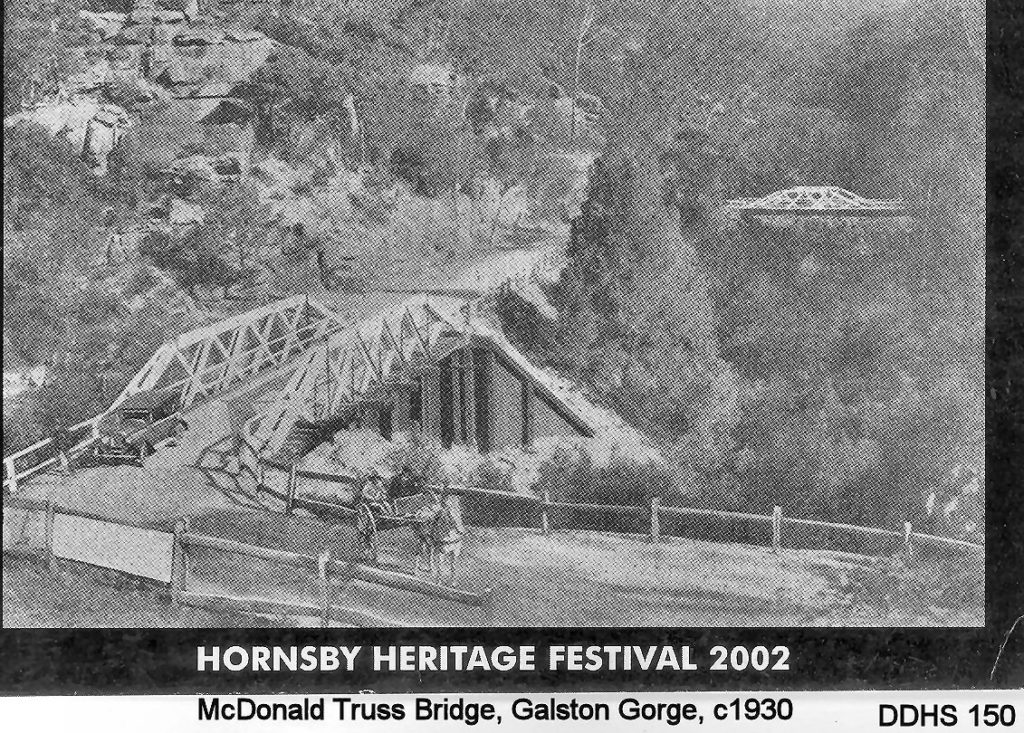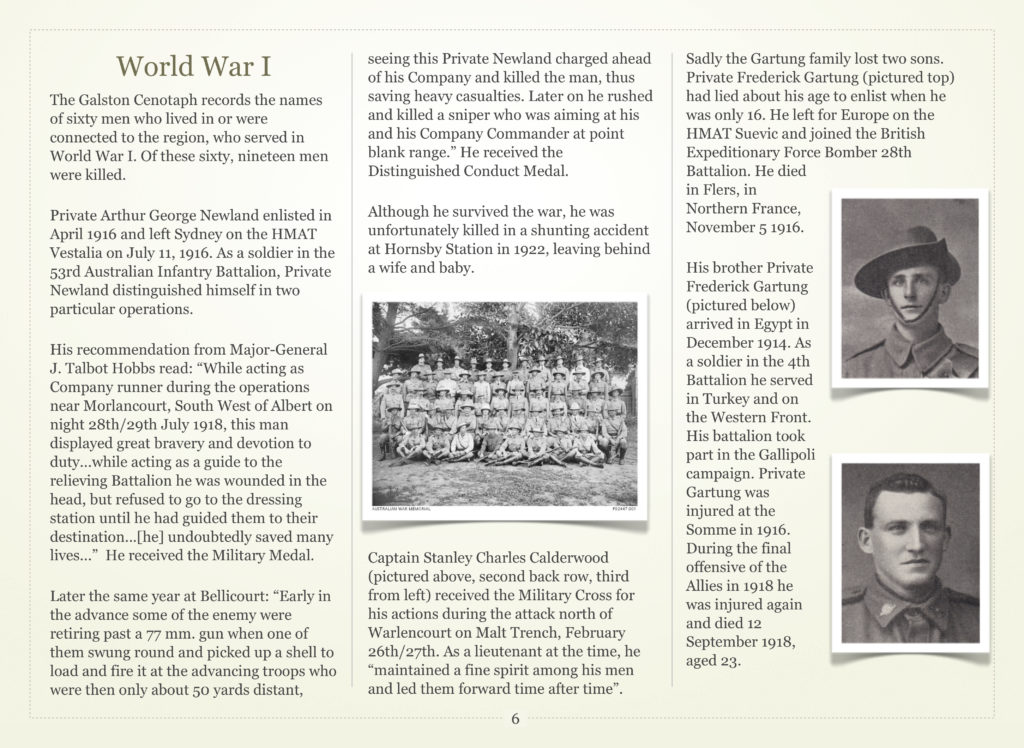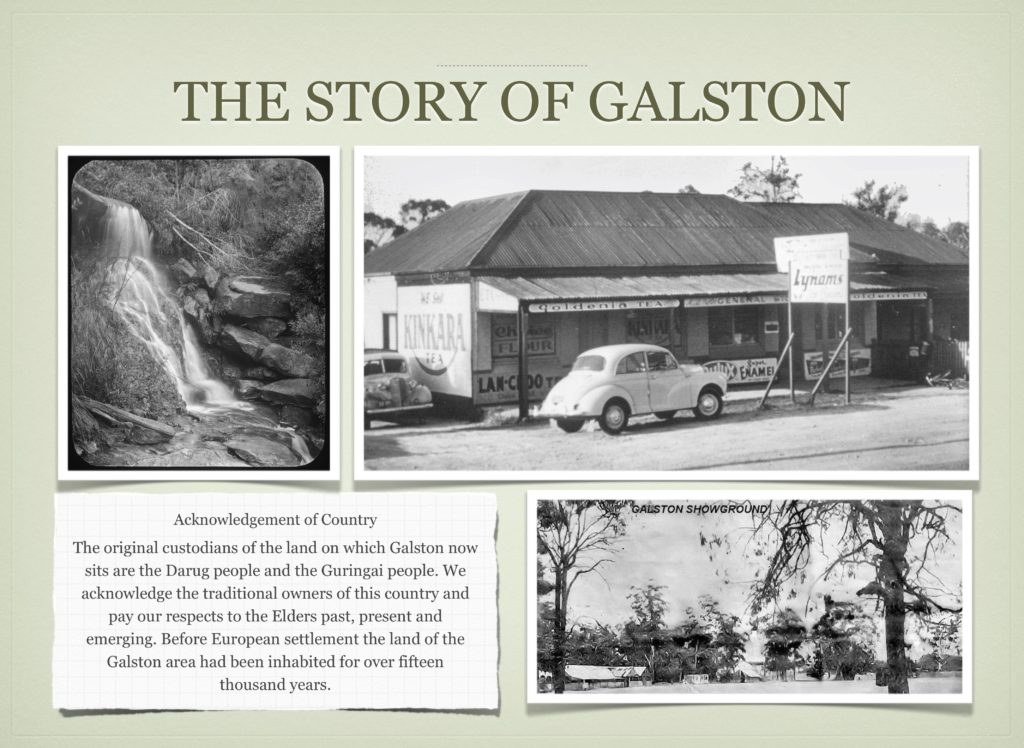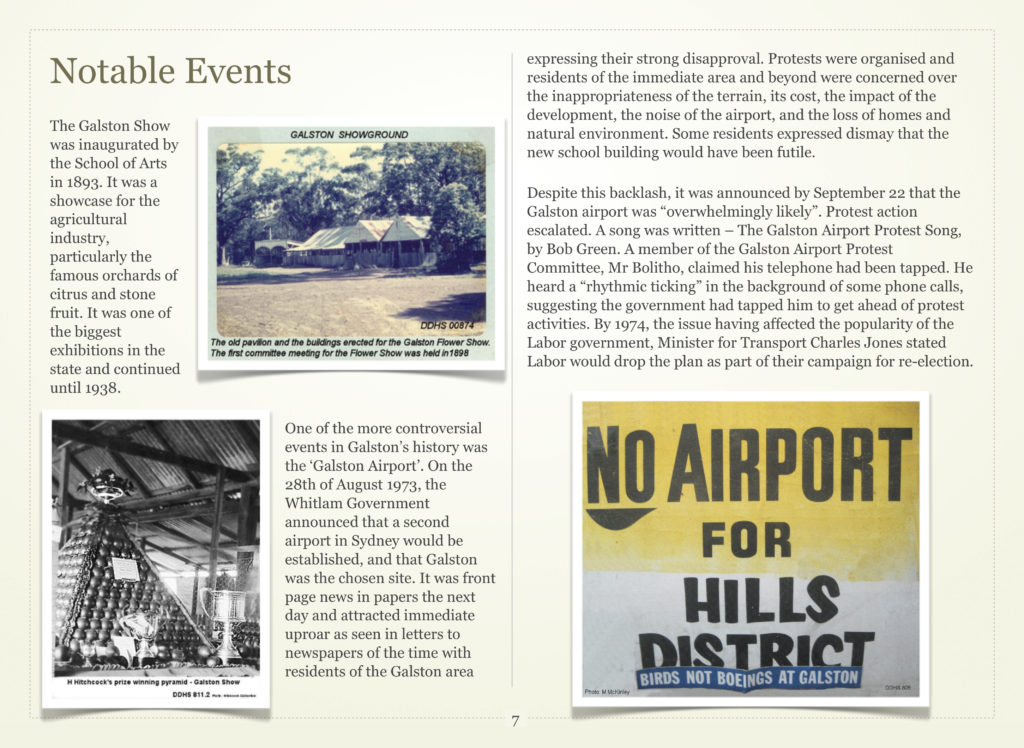Traditionally, museums focus on educating their visitors about the past. In today’s age though, this is simply not enough. Institutions are overlooking their obligation to plan for the future. For both locals and international tourists, museums are viewed as leaders and frontrunners when it comes to doing what is best for the people.
To be sustainable means that we need to meet the needs of the present without compromising future generations. Similarly, The Sydney Jewish Museum places a focus on educating their visitors about the Holocaust, to ensure that we are knowledge about the past so we do not compromise future generations. If we are knowledgeable, we should do what is right for those who will come after us. With the large influx of visitors at the SJM, they have the capability to help be a leader of change in museum sustainability.
For my final research project for the Sydney Jewish Museum, I created a working Sustainability Plan. I researched what many of the leading institutions around the world are doing, and I was able to create a personalized plan for the SJM. I broke it down into three main aspects of sustainable development: environment, economy, and society. I outlined both short and long-term goals, educated and informed them about what many of the sustainable practices are, and I gave suggestions for how I would go about attacking these problems based on the research that I conducted.
I chose to work with the Sydney Jewish Museum, because I didn’t know anything about Judaism in Australia, neither historically nor currently. The museum highlights Sydney’s ties to the Jewish religion, so I was excited to learn more. Additionally, I myself am Jewish and am passionate about the horrors of the Holocaust, the other focal point of the museum, so I was excited to continue to educate myself in that aspect too. The museum helps to educate their visitors about the rich culture and religion of Judaism through both permanent and feature exhibitions, memorials, collections, events, and they even have local survivors who speak there on a weekly basis.
I didn’t choose to do this project specifically, although I altered it along the way to best suit what I viewed would be most impactful for the museum. I really wanted to do something that would teach me more about this interesting period of history, but I knew it was important for me to do what the museum needed the most. The original idea came from Mrs. Roslyn Sugarman, who is the head curator at the Sydney Jewish Museum. She got the idea for this project after attending a conference that focused on museum sustainability. Museums are leaders in their respective communities and help to set a precedent for change, as people view museums as moral and ethical institutions. We ran with this idea of creating a sustainability campaign, and Ms. Breann Fallon had many insightful ideas along the way as well.
I got caught up going to the museum and meeting with many individuals to see how their respective departments run, that I didn’t decide until late for how I would conduct the final project. I thought that a Sustainability Plan is really the best first course of action to help create change, so I thought I would write-up a personalized one myself. During my research, I used action-plan documents that other museums or governing bodies had written up previously.
I wanted to do this project because I knew it would benefit everyone. It will help to create a better and healthier workplace within the SJM by constantly reminding internal members to make more environmentally friendly choices on a daily basis. Also, the museum has hundreds of visitors each week, and they will be the beneficiary and seeing the museum as a leader of change in this field, and they will hopefully be inspired by the progress the museum is making.
